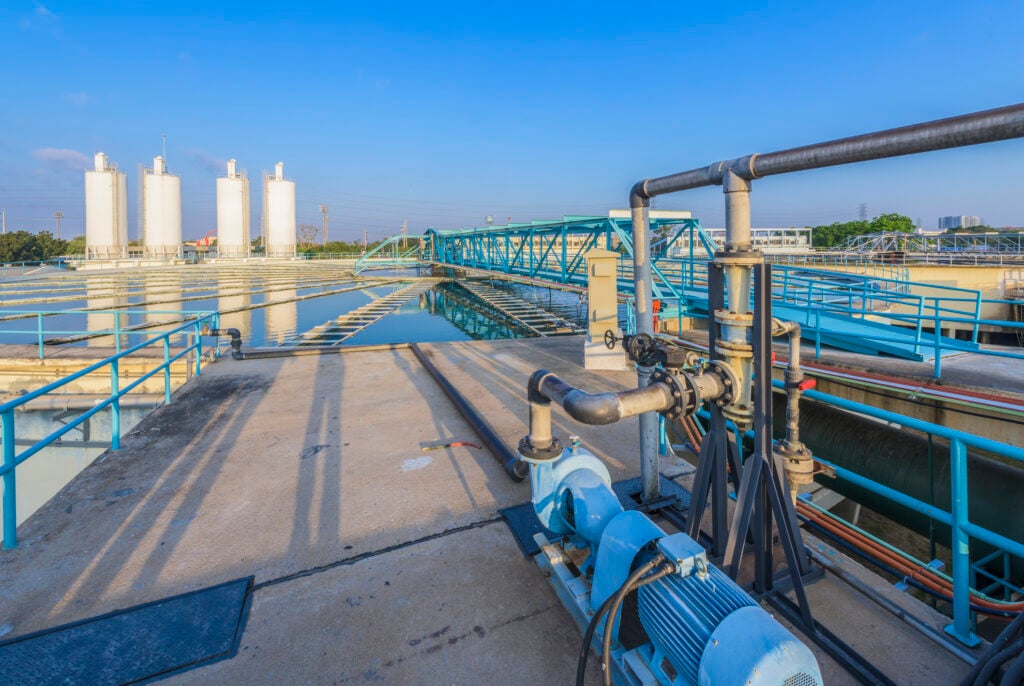If you get your water from a city or rural water supplier, then the chances are very good that it has gone through a process of disinfection. Chlorine is usually the disinfectant of choice and is added in a final step before the water goes to customers. While the disinfection process is a good way to reduce the spread of typhoid, cholera or dysentery, there is a downside to this process.
Unfortunately, disinfection produces several types of toxic byproducts. While these toxic byproducts can be harmful to health, the risk of serious illness is much higher if the disinfection is not part of municipal water treatment. Removing these chemicals before the water goes to your family reduces the chance these toxins can impair your health.
Toxic Chemicals Produced by Chlorine Disinfection
There are four types of toxic chemicals produced by this process.
- Trihalomethanes (THM): When chlorine interacts with organic and inorganic matter in water, chloroform, bromodichloromethane, dibromochloromethane, and bromoform are formed. Exposure to these chemicals are associated with bladder cancer, skin cancer and harm to developing babies. The Environmental Protection Agency (EPA) has set a limit of 80 parts per billion for all four THMs. But 36 states have levels about the EPA limit. Not everyone agrees that 80 parts per billion is sufficiently low to protect the health of those drinking this water. The California Office of Environmental Health Hazard Assessment has set a goal of 1 part per billion for chloroform and 0.06 ppm for bromodichloromethane to achieve levels more protective of health.
- Haloacetic Acids (HAA5): This is another group of chemicals formed by chlorine disinfectants. There are five regulated chemicals from this group: monochloroacetic acid, dichloroacetic acid, trichloroacetic acid, monobromoacetic acid, and dibromoacetic acid. The EPA has set a limit of 60 parts per billion of HAA5 in drinking water. However, exposure to haloacetic acids increases the risk of cancer and harm to a developing fetus. The Environmental Working Group recommends a limit of 0.1 parts per billion to fully protect health.
- Bromate: When ozone is used to disinfect water that contains naturally occurring bromide, bromate is formed. Coastal areas and areas with shale formations have a higher concentration of bromide. Shale is found in Southern California, the Rocky Mountains, along the Appalachians, south of the Great Lakes and the Midwest from the Gulf to Iowa. Over time, bromate can cause kidney and gastrointestinal problems, hearing loss, nervous system effects and an increased risk of cancer. Per the EPA, no more than 10 parts per billion is permitted in drinking water. The California Office of Environmental Health Hazard Assessment has an even lower goal of 0.01 part per billion because of bromate’s ability to cause cancer.
- Chlorite: When chlorine dioxide is used as a water disinfectant, chlorite can be formed. If levels get too high, it can harm red blood cells, disrupt the endocrine system, irritate the mouth, esophagus, and stomach and affect the nervous system. The EPA limits chlorite in drinking water to 1 milligram per liter which equals 1,000 parts per billion. The Environmental Working Group recommends a much lower level of 50 parts per billion as better protection for health.
Discover the Level of Disinfection Byproducts in Your Water
When you have your drinking water tested by a professional lab, you can determine if your water has levels of contaminants that endanger your health. With that information, you can install the right water treatment system to remove them. The Premium Water Test from ETR Laboratories can give you the information you need to make your water safer. Order this test today!

